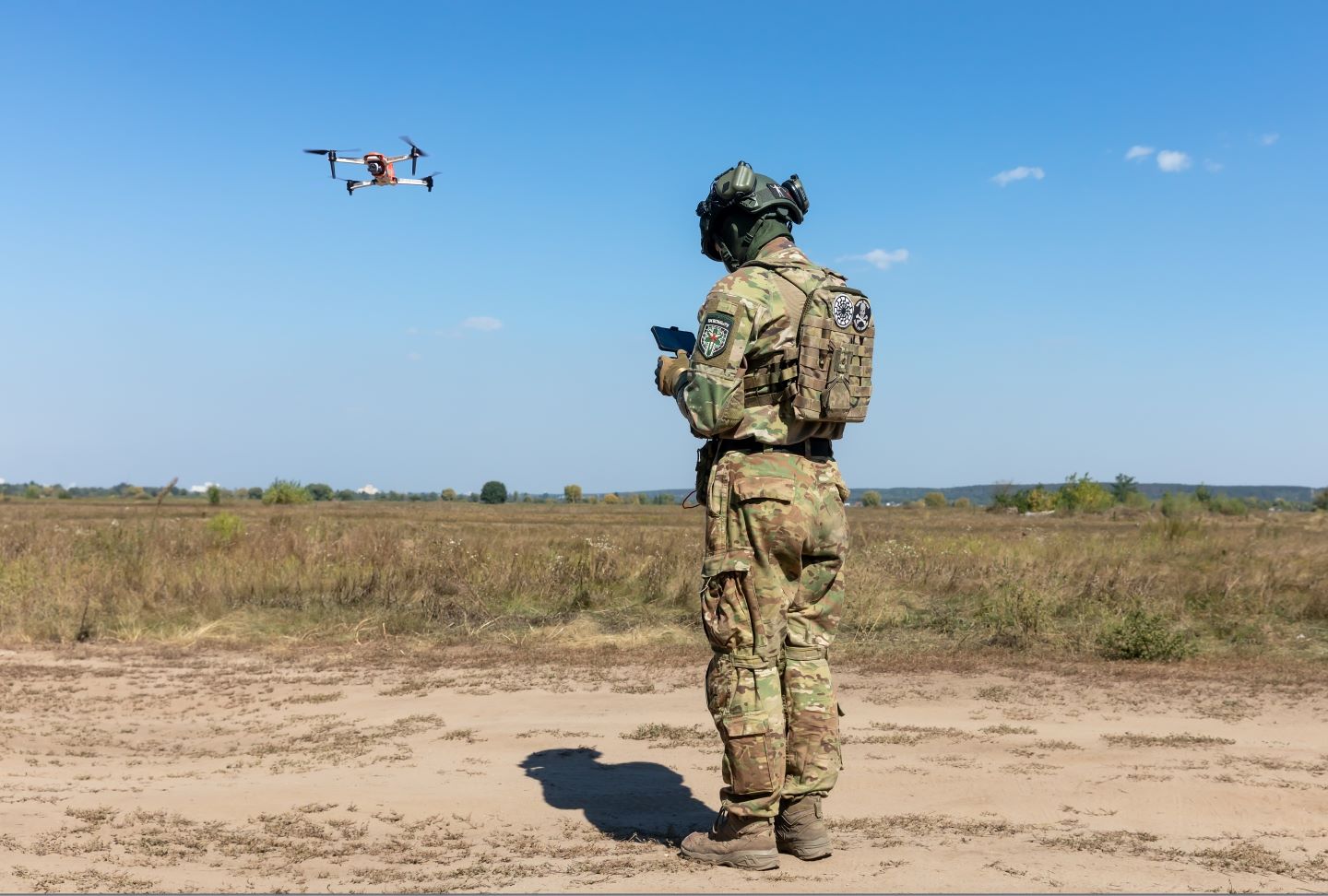In large-scale, high-intensity warfare, the military industry can itself become a target. In Ukraine, tank factories and air force maintenance depots have been struck by Russian missiles repeatedly.
To sustain barrages on either side of the firing line, work is done in triple shifts at factories and the effort to procure raw materials is constant. For some types of weapons such as cruise and ballistic missiles, Russia retains an advantage, producing as many as 65 a month – enough to strategically time routine bombardments in concert with cheaper drones.
But Ukraine has in recent months demonstrated a remarkable capacity to manufacture drones, particularly first-person-view (FPV) variants, which are guided by a user wearing a virtual reality (VR) headset. Such munitions are used to devastating effect in frontline combat, often compensating for Ukraine’s near-constant shortfall in conventional artillery ammunition.
From January to February 2024, the Deputy Minister of Strategic Industries claimed that FPV production totalled a staggering 200,000. To avoid targeting by Russian strikes, a small army of dispersed volunteers, supported through online resources such as Telegram channels and even instructional courses on Zoom, is producing drones from small and discreet warehouses, converted barns, cellars, or even their living rooms.
For almost 18 months now, Russia has implemented a bruising campaign to target Ukrainian critical infrastructure and civilian areas with a combination of cheap drones such as the Shahed and more capable missile systems, in the hope of sapping Ukrainian morale and resources whilst wearing down expensive missile defense system stocks.
See Also:
But Ukraine now responds in kind. For almost a year, Ukrainian drones of various types have reached as far as the Kremlin in Moscow, and airbases from which Russian bombers mount raids deep in the Caucasus. Tracking them all individually would take time, but as recently as March 12, Ukrainian drones have hit Oil Refineries in Nizhny Novgorod and Ryazan, imposing disruption on the Kremlin’s main source of financing.
How well do you really know your competitors?
Access the most comprehensive Company Profiles on the market, powered by GlobalData. Save hours of research. Gain competitive edge.

Thank you!
Your download email will arrive shortly
Not ready to buy yet? Download a free sample
We are confident about the unique quality of our Company Profiles. However, we want you to make the most beneficial decision for your business, so we offer a free sample that you can download by submitting the below form
By GlobalDataThe A-50 airborne early warning and control aircraft, of which Russia has only a precious few (now six), has also been targeted on the tarmac. Average Ukrainian FPV production costs anywhere from $331-$443 depending on quality, and has even started making its own flight controller circuit boards, cutting out risky foreign sources such as China. Up to ten larger Ukrainian companies are reportedly dedicated to making the longer-range systems using to strike deep into Russia.
No one production line will be decisive, but this model of defense production is a serious boon for Ukraine.
In Western defence production, there has been a trend in the last few decades since the end of the Cold War to invest in small numbers of highly engineered, complex, and expensive platforms over the mass production of simpler, cheaper, and rugged systems. When one is fighting a low-intensity counterinsurgency conflict, such a philosophy lends itself well to providing the ‘absolute best’ for the military to assume minimal risk to one’s own forces, and avoid potential operational failures.
But this approach is questionable in a war where Russian forces can fire up to 60,000 artillery shells a day at their most aggressive. Equipment such as armoured vehicles are more akin to expendable means to push the frontline forward rather than ‘exquisite’ platforms which must be preserved at a high cost; consider that Russia is approaching almost 3,000 visually confirmed losses of main battle tanks, when just a few years ago, Boris Johnson told a Parliamentary committee that the ’era of tank battles in Europe is over’.
Ukraine’s approach does not guarantee the most capable platforms, but with larger numbers of crude designs, it is inflicting serious attrition on Russian forces, and now hitting both the industrial base and the energy system the Kremlin relies on to fund its invasion.
When a $500 drone can blow the turret off a $10m tank, it is time to ask serious questions about economies of scale as the West seeks to scale rearmament.
Already, we see some indication that Western nations are beginning to face this reality. The UK and Latvia are leading a materiel aid coalition specifically working to supply ‘tens of thousands’ of drones to Ukraine, seeking competition from domestic manufacturers to see who can deliver both scale and affordability. In the US, the Department of Defense (DoD) is establishing several teams working with commercial tech companies to explore fast, flexible contracting, including the ‘Replicator’ program, aiming to field ‘thousands’ of autonomous drone systems across all domains in two years or less. These initiatives are likely going to be uncomfortable and unfamiliar for the industry – but therein lies half the point. A recent shift of initiative back to Russia in Ukraine as the West’s defence production fails to keep up and aid is delayed underlines the stark reality that conventional, state-on-state conflict is as much an economic competition as a military one.









Related Company Profiles
Zoominfo Technologies Inc
Oil Refineries Ltd
China Gas Holdings Ltd